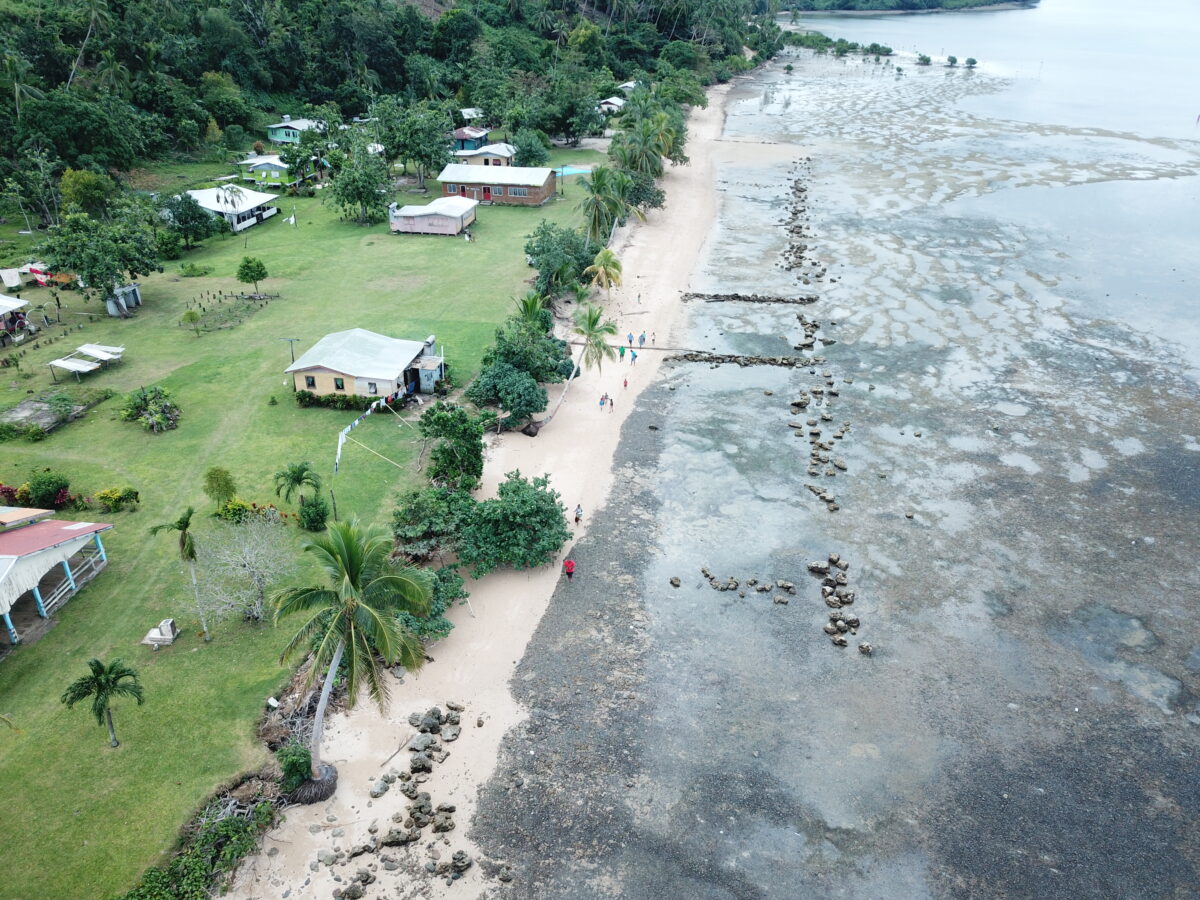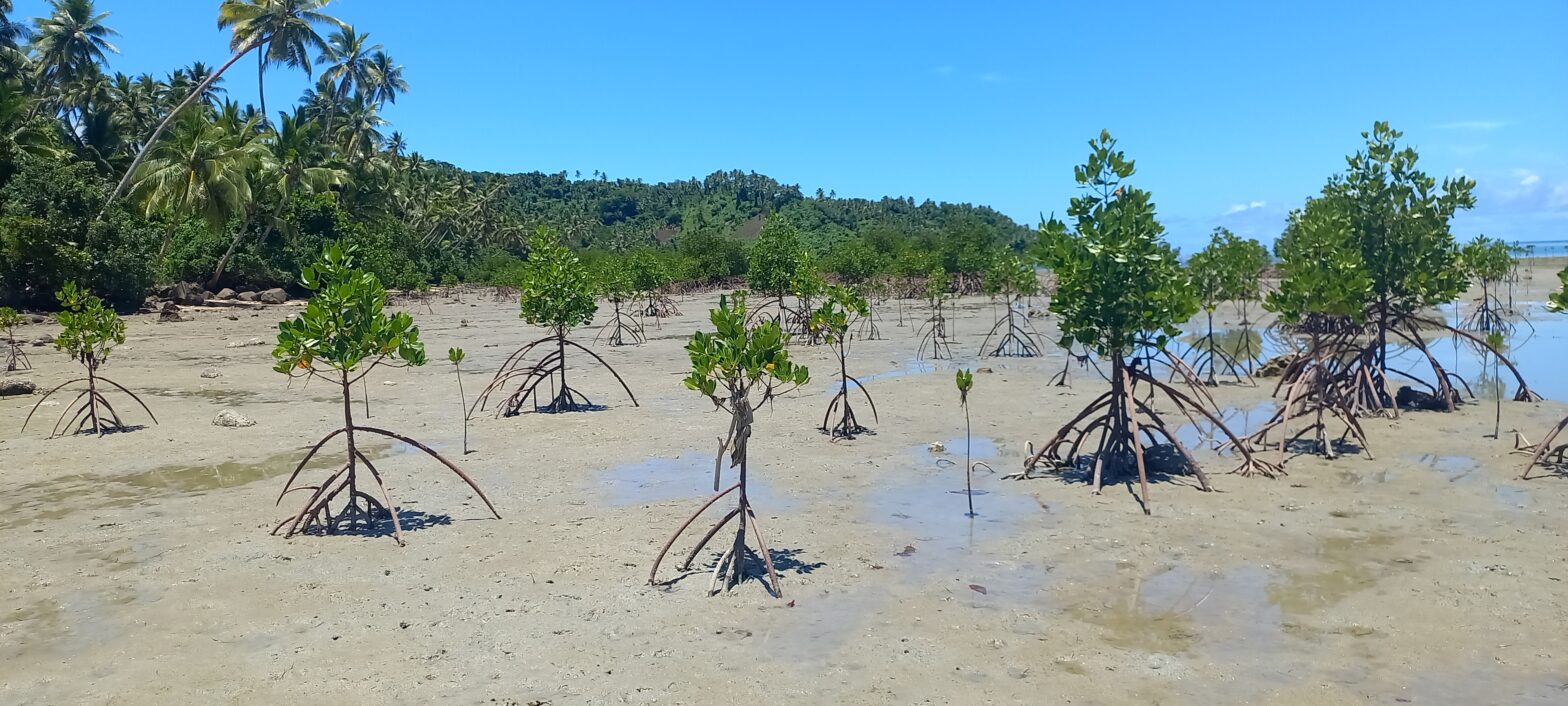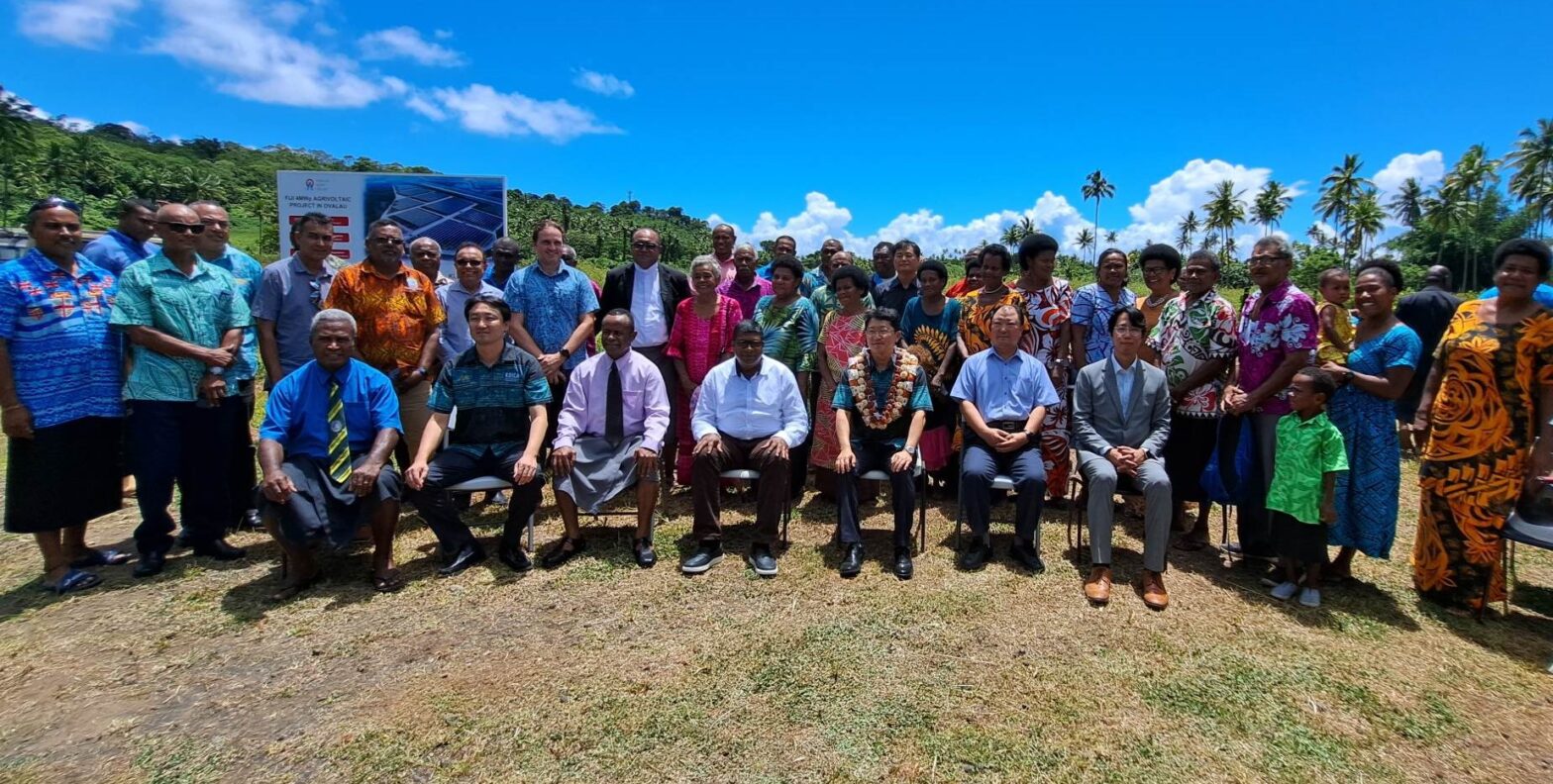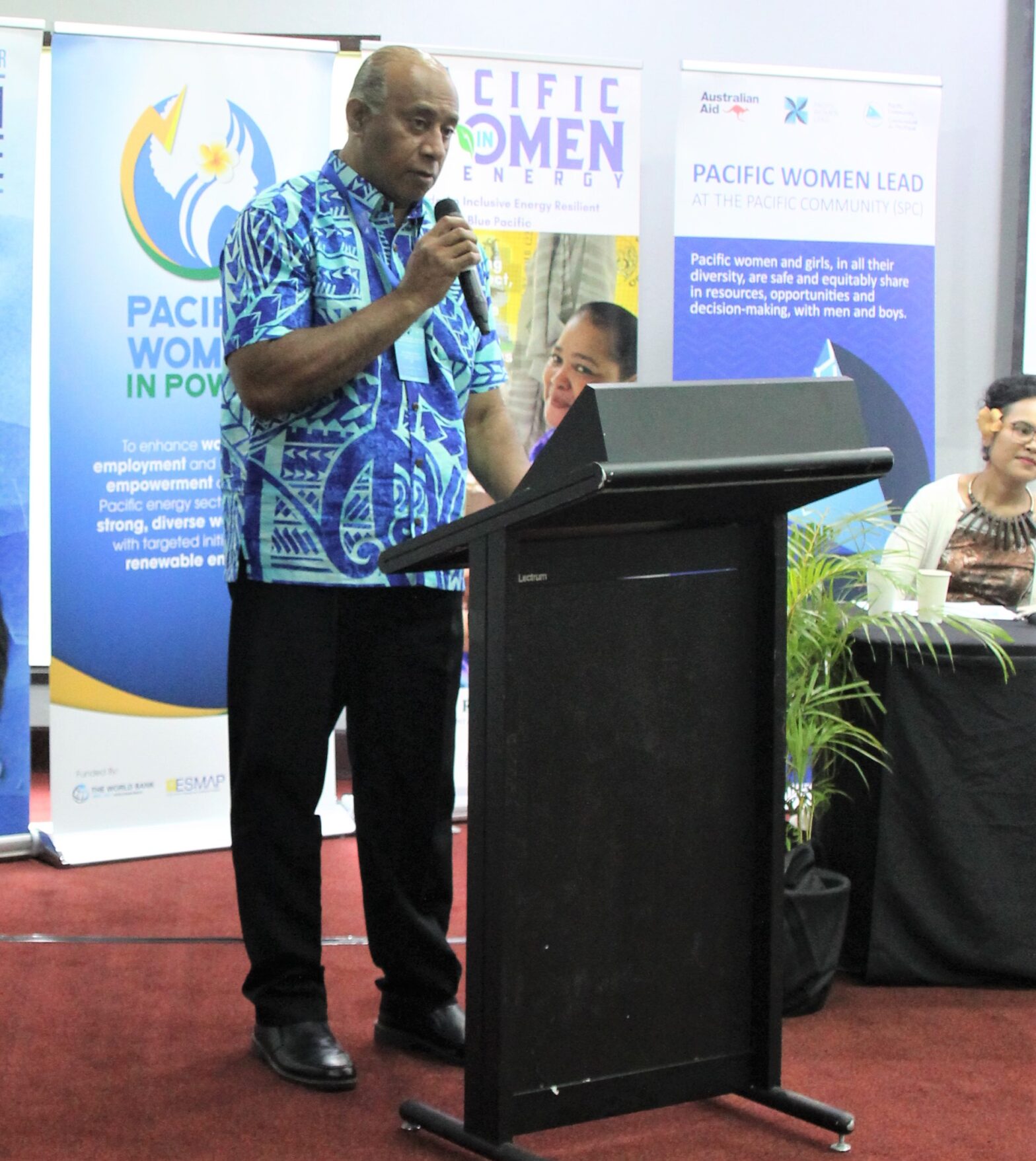C3’s subsequent long-term partnership with climate affected Kia Island helped resource owners to apply environmental best practices when using their natural resources
Long before the link between human activities and climate change became common knowledge, coastal communities in Vanua Levu were attributing the gradual decline of their natural resources to divine retribution.
Deforestation, depleting fish stock, more frequent storm surges and flooding among other things were seen as an act of God.
“Religion and religious beliefs come in,” said Maleli Qera, Senior Project Officer for Community Centred Conservation Fiji (C3), a non-profit NGO that began its conservation work in 2010 on Kia Island, off the North Coast of Vanua Levu and home to Fiji’s Great Sea Reef.
“That these things happen because people are sinful. In these communities, religion plays a vital role in their daily lives. It’s a matter of putting our feet in their shoes and trying to really understand how they live their lives, what they think is important and then trying to work around those areas,” he said.
For the last 12 years, Qera has been working with rural and remote communities in Vanua Levu, Fiji’s second largest island, spreading awareness on how resource owners can apply environmental best practices when using their natural resources.
The biggest challenge, he said, is trying to make locals understand that they are the ones destroying their own resources by their actions and therefore are the only ones who could save them.
“As an example, in some of these coastal villages, they have to go far out into the sea to get a good harvest of what they want because it’s now harder to find them near the shore,” said Qera.
“Fish stock has disappeared as well. Ten years ago, villagers were able to catch seasonal fish right by their village. Now they have to go out to the reefs and camp for a few nights, so we tell them that’s the evidence of your resources being exploited – that you’re going far away compared to 10 years ago when you could just catch big fishes in front of your foreshore. And then they begin to see the negative impacts of it – parents leaving their family to go and camp on the reefs and the amount of expenses increase in order to catch fish because they have to buy fuel and go right out to sea. So it’s affecting the families socially and economically and putting pressure on their livelihood,” Qera added.
In some communities, mangroves were badly degraded and exploited due to an increase in the number of fibreglass boats.
“They’re removing mangroves because of these boats and in doing so, they’re now facing coastal erosion. Some communities have tried to implement initiatives such as land reclamation, with assistance from the government, burying, putting rocks along their foreshore, but still, the coastal erosion is still going on. We found out that the only solution is to replant or restore all those mangroves, so we came up with that program,” Qera said.
When C3 began its conservation crusade on Kia island’s three villages, the marine ecosystem was under pressure from heavy fishing activities and climate change but villagers could not link them to the declining fish catch they were experiencing.
C3’s subsequent long-term partnership with the villagers helped build awareness, capacity and inspiration for environmental stewardship as well as technical support in the management and protection of the Great Sea Reef as a Marine Protected Area (MPA).
Today, Kia islanders are not only knowledgeable in habitat and fisheries monitoring and MPA management, they have also successfully eased pressure off their marine resources by diversifying into other income-generating activities such as apiculture, printing, handicrafts and village stores, mainly run by local women.
C3’s success on Kia Island spread by word of mouth and it wasn’t long before other villages wanted to join too.
“We’re getting invitations from everywhere, villagers asking us to come to their villages and do what we did on Kia. In fact, when we moved to Labasa in 2016 (Labasa is the commercial centre of mainland Vanua Levu) it didn’t take long before we were serving eight communities. Now, we are in 15 villages all over Vanua Levu,” said Qera.
“We found out that there is a great need for awareness in these communities. The more awareness we provide for them, the better their understanding of climate change and what they can do to counter the problems brought about by climate change. In most of these communities, lack of information, poor media access and generally the lack of knowledge have kept them in the dark. By sending them a lot of awareness on climate change, what it’s all about, what it looks like, they now begin to realise what it is. At first, when we approached them, they say: ‘oh yes, changes happen all the time’ or ‘it’s because God is angry so it’s punishment for sins’. When we start talking about the scientific part of climate change, then they realise that yes, these changes will affect them in a big way and the solutions are not impossible. So that’s where they come in.”
‘Environment evangelists’
It would be unusual in Vanua Levu for locals not to have heard of C3 or know about the work that they do.
In the coastal Korotubu village, roughly 20 km Northwest of Labasa town, village headman Maciu Namoce refers to C3 officers as “environment evangelists,” and likens them to early Christian missionaries.
“We were in the dark about such a thing as climate change. They brought the light and showed us what was happening, for which we are very grateful.” said Namoce, who has also become a c3 volunteer in his village.
“With C3’s help, we’re working on the establishment of our MPA and waiting for the Ministry of Fisheries to survey our fishing grounds, which is likely to happen this year. C3 has been involved in the community here for the last two years and in that time, there has been a lot of improvement especially in our knowledge about the environment and our resources and how to look after them. The whole village is involved in conservation work and we are very happy that our young people are spending their time doing useful things,” Namoce added.
Like other villages served by C3, the entire village is involved. School children are trained to become “reef rangers” or guardians of the reef, youths are involved in replanting of native trees, fruit trees and mangroves while women are shown new ways of making money in order to ease their dependence on their sea resources.
About 40 km Northeast of Labasa lies Qaranivai village, another coastal community that was experiencing declining marine resources. It became C3’s first mangrove MPA pilot project.
Today, Qaranivai villagers are able to link this problem to unsustainable use and overexploitation of their resources.
“With C3 Fiji’s intervention, the village of Qaranivai established an MPA in 2018 to revive and help conserve our marine ecosystems. The total area of this MPA is 16.55 hectares. It includes the mangrove forest which has an area of 2.94 hectares,” said villager Vasenai Dibale.
“For just over a year, we have seen changes already which are a good sign that our plan was a success and that is to preserve and promote biodiversity, which will make our ecosystems healthier for our future generations.”
On the other side of the island, in Cakaudrove province, Sese villager and member of its women’s group Litia Tuiqawa commended C3’s alternative livelihood project, which target women and involve the introduction of other income generating activities that will help ease the heavy reliance on marine resources as the sole source of income.
“We’ve also established a nursery for native trees and mangroves which will be sold to C3 to generate income for our women’s group. I think what C3 is doing is very good because since we live far away from town, whatever additional source of income we get goes a long way in helping us with the needs of our families, especially helping in the education of our children,” Tuiqawa said.
Women of Sese village were also given specially designed stoves as gifts from the European Union through C3, which consumes less firewood, thereby easing the pressure off their forests and mangroves, which they normally turn to for firewood.
A community of around 20 houses, Sese village is one of C3’s mangrove restoration sites, with one end of the village directly exposed to the open sea.
“One end of our foreshore does not have any mangrove and whenever there’s extra high tide, the whole village gets flooded,” said village headman Aisake Balenadakai.
“With C3’s help, we had planted mangrove there but they kept dying. Recently, a gentleman from the Philippines came to our village and inspected the site and told us mangrove cannot grow there. So we are thinking of building a seawall there. We’re lucky that our plantations are on the hills around our village and our food source is safe. But flooding is happening more frequently and we now understand that this is because of climate change,” Balenadakai said.
A decade of conservation
As the only environmental NGO present locally and working on-site in all 15 communities it serves, C3’s engagement with the villages is carried out through relevant government ministries and is mainly centred on the reforestation of native trees and the establishment of MPAs for the restoration of mangroves.
“For now, all our 15 communities are involved in raising native tree saplings. We also conducted our training for mangrove nurseries for coastal villages so they’re also working towards having their mangrove nurseries. The communities give us a portion of their forests which they think has been degraded or exploited one way or another, some through logging, some through burning. And those are the areas that they want to restore so we demarcate those areas. Initially, our target was 10 hectares but we’ve now surpassed that. We now have 43 ha, so our target now is to try to reforest all that degraded 43ha, replanting it with only native trees. That includes hardwood, fruit trees and flowering plants,” said Qera.
The establishment of local MPAs in order to restore the biodiversity of mangroves is now something that most coastal villages want as word has spread on the difference it has made to fish stock.
“It isn’t easy setting up an MPA because most of these villages have joint fishing grounds. So if a village wants to put up a taboo area, it has to be approved as well by the other communities that share the same fishing ground, so a lot of awareness needs to go out first before a particular community can come up with its area,” said Qera.
Another important part of C3s work is its alternative livelihood projects for women, to help ease heavy reliance on their resources.
“We do screen printing for ladies, beekeeping, goat farming, dalo (taro) farming, some women’s projects like canteen, shops in the villages, sandalwood farming, poultry…all are alternative economic activities that they can diversify into,” said Qera.
A decade of conservation work has taken Qera and the C3 team all over Vanua Levu where they have seen many forms of environmental degradation, made worse by the general lack of awareness in local communities.
“I think we still need to do a lot of awareness,” said Qera. “Sending awareness to isolated communities or hard to reach communities is the only way to help them solve problems associated with climate change. People need to know.”
This story was produced with the support of Internews’s Earth Journalism Network.




